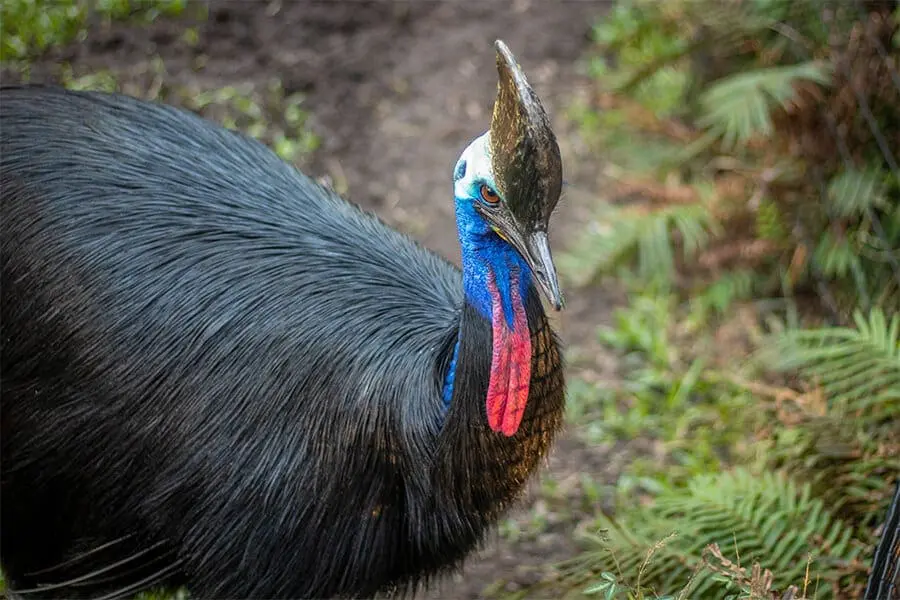

What kind of hat is that?
If you’ve been to the Zoo, you might’ve seen our southern cassowaries in Lands of Change: Australia and Beyond. These massive flightless birds are most closely related to, but should not be confused with, the emu. Unlike emus, however, each cassowary has a large growth on its heads known as a casque.
Scientists have been trying to identify the function of the casque for centuries, and thanks to 20 cassowaries in human care, they may finally have their answer. In a recently published study, researchers at La Trobe University in Australia found that the horn-like growth is likely used to help these birds keep cool during Australia’s hot summers.
Using a thermal imaging device, it was discovered that the birds released less heat from the casque in cold weather, and more when temperatures were higher. The University’s findings showed these large-bodied, dark feathered birds that live in tropical climates have a strong need to offload heat; the casque, then, would serve as a “thermal window.”
This research shows how important zoos are in allowing scientists to conduct research that wouldn’t otherwise be possible. Interestingly enough, the report also pointed out that many dinosaurs had casques, and it is possible that they also used them to regulate their temperatures. How cool!